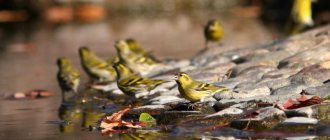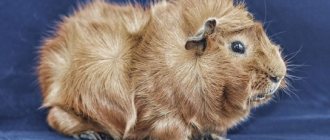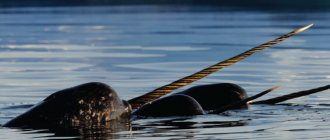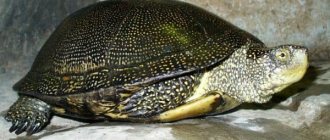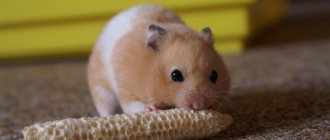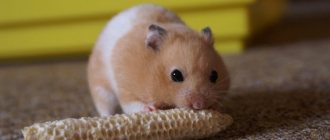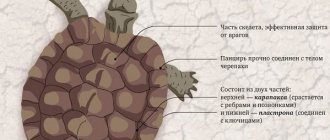Gerbils (Gerbillinae) are a special group of rodents that are similar in appearance to each other. The family has 13–15 genera and about 80 species, which are grouped into two subfamilies. Within each genus, the differences are very slight, and, as a rule, are manifested in the coloring features, the length of the tail and the tassel on it. Therefore, it is not entirely clear how many species of gerbils there are. Among all the representatives of the extensive family, the most famous is the clawed gerbil. This is a cute animal with large dark eyes, a white belly and a fluffy tail with a tassel at the end. It is the clawed (Mongolian) gerbil that is most often kept as a pet. You can read about keeping gerbils at home here. In this article we will talk about the lifestyle of gerbils in their natural habitat.
Description of the rodent
— Advertising —
The body length of the gerbil is 5-20 cm, the tail length is 6-24 cm. The weight ranges from 10 to 227 g. The tail is long, pubescent, in some species with a tassel at the tip. The muzzle is pointed or blunt in shape. The eyes are large, bulging, the ears are large. The back is dull, ocher-sandy or brownish in color, the belly is light. There are light spots on the head in the area of the ears and eyes.
Habitat
These animals are common in desert and semi-desert regions of Africa and Asia. Their habitat covers the territory from the northeastern part of the Ciscaucasia to Kazakhstan and Transbaikalia. The rodent is also found on some islands in the south and east of the Mediterranean.
The gerbil animal prefers to settle where clayey, crushed stone and sandy soils predominate. That is why the rodent received such a name.
Some species live in mountain valleys and even in humid forests. But still, most representatives of this family live in arid regions with a temperature range from -5 to +45 degrees. The main condition for the normal life of a rodent is the presence of vegetation, which serves as food for it.
Feeding characteristics of the gerbil
Gerbils are omnivorous rodents; their diet includes various parts of plants (seeds, roots, tubers, leaves, fruits), as well as insects (locusts, crickets). In addition, these rodents can feed on the feces of donkeys and camels. In their burrows, gerbils store up to 60 kg of food.
When kept at home, gerbils are fed wheat, oats, corn, barley, grass, hay, vegetables, fruits, except citrus fruits.
Lifespan
You should know how long gerbils live before purchasing. So, with normal care, the average rodent will live about three years.
Record holders with a life expectancy of four years are rare. In the last year, the pet becomes lethargic, and various diseases and poor appetite also appear.
Common types of gerbil
Short-tailed pygmy gerbil or Simon's gerbil (Gerbillus simoni)
Body length up to 10 cm. Weight about 30 g. The tail is long and pubescent. The back is ocher-sandy, the belly is light. The habitat includes the steppes and cultivated areas of Algeria, Egypt, Libya, Morocco, and Tunisia.
Balochistan gerbil (Gerbillus nanus)
Body length is about 6 cm, weight up to 25 g. The color is the same as that of the dwarf gerbil. Found in Afghanistan, Algeria, Chad, India, Iran, Iraq, Mali, Mauritania, Morocco, Niger, Oman, Pakistan, Saudi Arabia, Tunisia, United Arab Emirates, Yemen, deserts, semi-deserts, arable lands and gardens.
Cheesman's gerbil (Gerbillus cheesmani)
Externally it resembles a dwarf gerbil. Body length from 70 to 110 mm, tail length from 90 to 135 mm. The back is orange-brown, the belly is white, the eyes are large.
The species is distributed in the Arabian Peninsula and the Middle East (Saudi Arabia, United Arab Emirates, Oman, Yemen, Kuwait, Iraq, Iran, Syria, Jordan).
Persian gerbil (Meriones persicus)
Body length 13-19 cm, tail length 14-19 cm, weight from 72 to 172 g. The back is yellow-brown or red-brown, the belly is white. A tail with a tassel at the tip.
It lives in Afghanistan, Armenia, Azerbaijan, Iran, Iraq, Pakistan, Turkey, Turkmenistan, at altitudes up to 3250 m above sea level, in mountain steppes.
Sundevalla gerbil (Meriones crassus)
Body length with tail is from 21 to 29 cm. Body weight reaches 70 g. Males are larger than females. The coat is long and soft, yellow-brown on the back. The paws are white inside. There are white spots near the eyes and ears. The tail is long, light with a black tassel.
The species is found in North Africa from Morocco to Tunisia, Nigeria, Sudan and Egypt, and in Asia in the south of the Arabian Peninsula (Oman, Saudi Arabia), Israel, Jordan, Syria, Iraq, Iran, Pakistan and Afghanistan.
Clawed gerbil or Mongolian gerbil (Meriones unguiculatus)
Body length up to 20 cm, weight from 75 to 120 g. Males are larger than females in size. The tail is long with a tassel.
It lives in the northern deserts and dry steppes of East Asia, and is especially common in Mongolia.
Daytime gerbil (Psammomys obesus)
Body length is 14-19 cm, tail length is 12-15 cm, weight is 80-150 g. Outwardly it resembles a dwarf gerbil.
Distributed in deserts from Algeria to Saudi Arabia.
Greater gerbil (Rhombomys opimus)
The largest gerbil. Body length 15-20 cm, short tail with a black tassel.
Lives in Central Asia (Uzbekistan, Turkmenistan, Kazakhstan, Iran, Mongolia, China, Afghanistan).
Fluffy-tailed gerbil (Sekeetamys calurus)
Body length from 10 to 12.5 cm, tail 11-16 cm long. Color from yellow to red. The belly and paws are whitish. The tail is fluffy, brown with a white tassel.
It is found in rocky areas and deserts in northeast Africa and western Asia.
Fat-tailed gerbil (Pachyuromys duprasi)
The body length is 11-14 cm, the tail length is from 4.5 to 6.1 cm, the weight is in the range of 30-65 g. The muzzle is pointed, the tail is short and thick. The fur is soft, thick, sandy-brown on top, light on the belly.
Distributed in deserts, semi-deserts and steppes of North Africa.
Short-eared gerbil (Desmodillus auricularis)
Body length is 10-12 cm, tail length is 8-10 cm, weight reaches 70 g. The top of the body is orange or reddish-brown, with white spots behind the ears. The belly and paws are white. The ears are short and pink. The tail is short without a tassel.
Found in South Africa (Angola, Botswana, Namibia, South Africa).
Midday sand lance (Meriones meridianus)
A small gerbil with a body length of 9 to 13 cm, a tail length of up to 14 cm. The back is sandy-yellow with brownish-brown or grayish tones. The eye rings are white. The belly is white. The color of the tail and tassel matches the color of the back.
It lives in the sandy deserts of Asia (Kazakhstan, Iran, Afghanistan, Mongolia, China).
Social structure and reproduction
Photo: Pair of gerbils
During mating, copulatory plugs are formed in the reproductive tract of females, which prevent subsequent matings. Some species of gerbils breed year-round, while others breed seasonally. Females of most species are capable of producing several litters per year. Some also experience postpartum heats and delayed implantation, so that a new litter begins to develop as soon as the first one is weaned. Gestation periods, if the female does not breastfeed, last three to four weeks.
Litter sizes range from 1 to 13, although litters of 4 to 7 are much more common. Young gerbils are born completely naked and blind. Fur begins to grow between 8 and 13 days after birth, and they are completely covered in fur after 13-16 days. The eyes open approximately two or three weeks after birth. The young can walk and jump quickly after about three weeks. At the age of one month, the cubs are weaned and become independent. They reach maturity in 10-16 weeks.
Fun Fact: Mothers care for their babies by licking the newborn's hindquarters to encourage them to produce urine and feces, which they then consume.
Female gerbils care for their young until they are about 30 days old. Gerbil mothers are known to move their young to new nests several times in the first few days after birth, as well as change burrows between litters. When they leave young in the nest to go out to feed, they sometimes cover their brood with grass and sand and block the entrance to the nest. Females carry their young by clutching them in their mouths.
As soon as the young individuals begin to move around a lot, the mothers grab them by the tails and pull them towards them, and then take them back to the nest. They stop picking up their children when they are between 17 and 23 days old. Gerbil mothers care for their litters until they go out on their own. Males of some species care for their litters in the same way as females.
Gerbil behavior
Gerbils are diurnal animals that lead a terrestrial lifestyle. They can move on the ground by jumping up to 3.5 m long on their hind legs. Gerbils are active all year round; in winter their activity decreases. They do not hibernate; in cold weather they can go into torpor.
Gerbils lead a burrowing lifestyle and live in colonies. They do not go far from their burrows; they look for food in bushes. Burrows are located under the roots of bushes. Gerbils have temporary feeding burrows, spring/summer burrows, and permanent wintering burrows. The depth of the latter is from 80 to 200 cm, the length is about 4 m, there are storerooms and several living chambers. 5-15 gerbils spend the winter in such a hole.
Health
Gerbils are in good health, but if they are injured or sick, a visit to the vet cannot be avoided. What do gerbils get sick with?
- Injuries. Gerbils can cope with falling from low heights, but falling from high surfaces can result in fractures. If the pet is injured, for example, in a fight with a cagemate or a scratch from a piece of metal, it is necessary to disinfect the wound and contact a veterinarian.
- Tail problems. It's tempting to grab her by the tail, but this will cause her irreparable harm.
- Stress and heat stroke. Gerbils are prone to overheating; this results in stupor, shaking and even death. Make sure the cage is well ventilated and if you suspect overheating, take immediate help.
- When falling or sudden stress, the gerbil may go into shock, which can lead to convulsions. These phenomena go away on their own.
- Diseases. Like other rodents, gerbils suffer from colds and may contract diarrhea (diarrhea) or parasites. All of these problems are treatable, but if left untreated, your pet's life expectancy will be shortened.
Purchase
Gerbils are sold in pet stores and breeders. If you are looking for a specific breed of gerbil, you will have to find out from the breeders. When buying a gerbil, pay attention to:
- Bright eyes
- Shiny fur
- Healthy Appetite
- High energy (if not sleeping)
- Clean and dry area under the tail (no signs of diarrhea)
Answer to the question: jerboa.
Interesting facts about the rodent:
- The gerbil's tail can fall off when attacked by predators, but does not grow back.
- Many species of gerbils carry pathogens such as plague and zoonotic cutaneous leishmaniasis. In addition, some of the gerbils are known to be pests of crops. In captivity, this type of rodent is kept as pets and laboratory animals.
- 35 species of gerbils are listed in the International Red Book. Among them, Meriones chengi is in critical condition, and four species of small gerbils are endangered: Meriones arimalius, Meriones dahli, Meriones sacramenti, Meriones zarudnyi.
- Gerbils take root well at home. They are equipped with a metal cage, 40-50 cm in size, with a running wheel, like for squirrels and chipmunks, and a container with sand for sand baths. Gerbils are unpretentious, easily make contact with humans, respond to calls, and take food from hands. Gerbils are fed bread, legumes, hay, cultivated grains and green grass. They willingly gnaw branches of willow, linden, poplar, and eat sunflowers, beets, carrots and berries. Animal food includes cottage cheese, mealworms and locust insects. Chalk, eggshells and glycerophosphate are added to the diet of gerbils as mineral supplements.
Biology test No. 2, grade 9
Test work No. 2 on the topic: “Patterns of life at the organismal level.”
Viewing the contents of the document “Test work in biology No. 2, grade 9”
Test work No. 2 on the topic: “Patterns of life at the organismal level.”
1. A bacterial cell lacks: a) nucleic acids, b) cell membrane, c) cell nucleus, d) ribosomes.
2. Monocot plants are characterized by venation: a) pinnate, b) palmate, c) arcuate, d) reticulate
3. Ectoderm and endoderm appear for the first time in the process of evolution in representatives of: a) protozoa, b) coelenterates, c) flatworms, d) roundworms.
4. The location of a gene on a chromosome is called: a) genotype, b) locus, c) allele, d) nucleotide.


